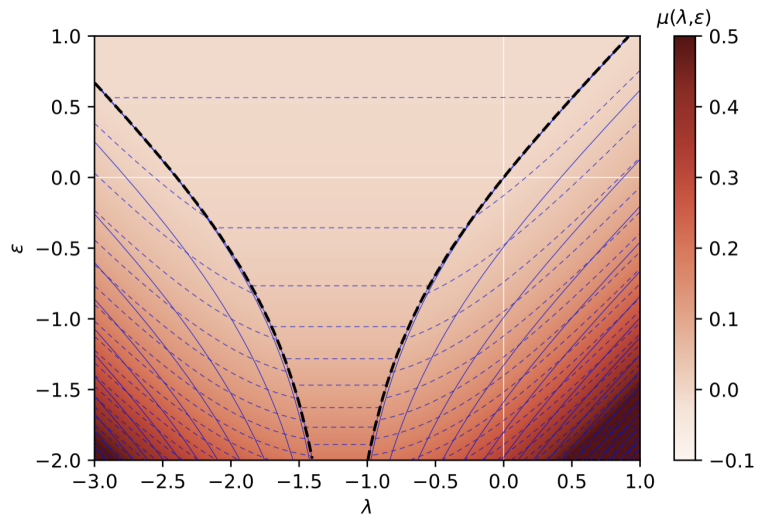D. Manzano, M.A. Martínez-García, P.I. Hurtado
Strong symmetries in open quantum systems lead to broken ergodicity and the emergence of multiple degenerate steady states. From a quantum jump (trajectory) perspective, the appearance of multiple steady states is related to underlying dynamical phase transitions (DPTs) at the fluctuating level, leading to a dynamical coexistence of different transport channels classified by symmetry. In this paper, we investigate how strong symmetries affect both the transport properties and the activity patterns of a particular class of Markovian open quantum system, a three-qubit model under the action of a magnetic field and in contact with a thermal bath. We find a pair of twin DPTs in exciton current statistics, induced by the strong symmetry and related by time reversibility, where a zero-current exchange-antisymmetric phase coexists with a symmetric phase of negative exciton current. On the other hand, the activity statistics exhibits a single DPT where the symmetric and antisymmetric phases of different but nonzero activities dynamically coexists. The presence of a strong symmetry under non-equilibrium conditions implies non-analyticities in the dynamical free energy in the dual activity-current plane, including an activity-driven current lockdown phase for activities below some critical threshold. Finally, we also study the effect of a symmetry-breaking, ergodicity-restoring dephasing channel on the coupled activity-current statistics for this model. Interestingly, we observe that while this dephasing noise destroys the symmetry-induced DPTs, the underlying topological symmetry leaves a dynamical fingerprint in the form of intermittent, bursty on/off dynamics between the different symmetry sectors.

